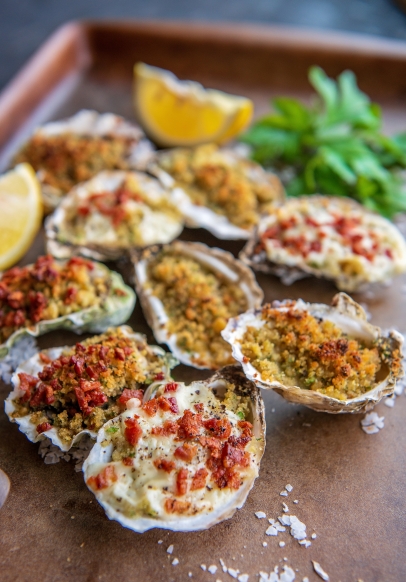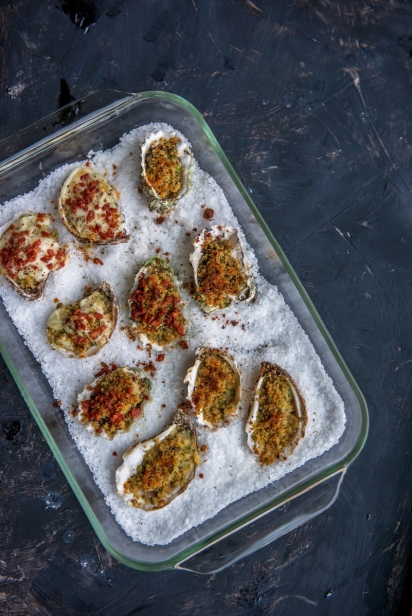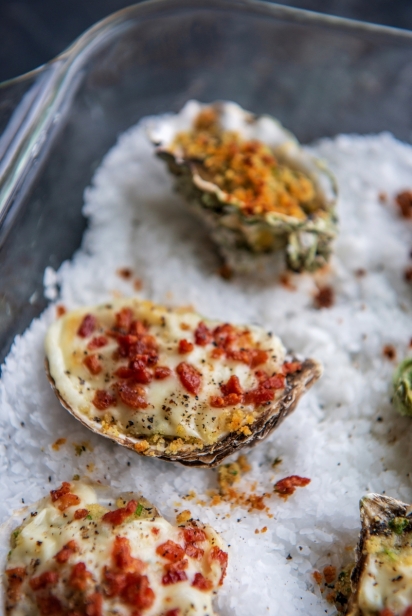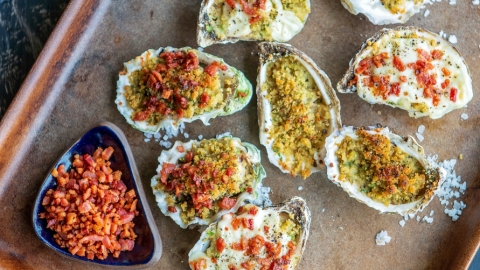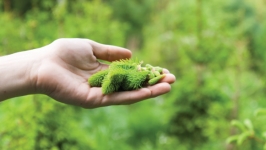Party on the Half Shell
Oyster Myths
It’s hard to believe now, but there was a time when I was reluctant—okay terrified— to eat a raw oyster. I’d been brought up to believe that you had to let the oyster slide down your throat without biting into it; otherwise it would balloon up in some sort of bivalvian revenge and choke you to death.
Where this myth originated, I have no idea, but thankfully it’s not true. It would be a sadness, indeed, to go through life without savouring the tender minerality and subtle brininess of the exceptional oysters that grow around Vancouver Island. Like, say, the smooth-tumbled, deep-cupped Kusshi, an oyster bred by Stellar Bay Shellfish to be “one, exquisite bite,” with meat that is “consistently plump, firm, fresh and delicious.” It is, in other words, the best—which is what kusshi means in Japanese—like taking a perfect little bite of the sea.
But I digress.
There are other myths surrounding oysters. For instance, that oysters are fancy and expensive (no, especially not during happy hour). Oysters are fattening (no). Oysters should be slathered in Tabasco and seafood sauce (just … no). Oyster farming is bad for the environment (no, quite the opposite). Oysters are an aphrodisiac (actually, this one is sort of true).
But perhaps the most prevailing myth is that oysters should only be eaten in months that include the letter R, September through April, when the waters are cold and clean.
There were once good reasons for this. For one thing, oysters spawn in warm water, releasing millions of baby oyster eggs each, and while they are reproducing, their flesh gets soft and mushy. Patrick McMurray, the Canadian who happens to be the world’s best oyster shucker, describes the texture as “creamy,” and notes that it is “off-putting to some, but desirable to many others.”
Also, bacteria multiply in the heat, and in the days before refrigeration, freshly harvested seafood was often left to bake on sun-soaked docks with predictable consequences. And if that’s not enough to terrify you, summer is also the season of red tides—algae blooms that can contain a toxin causing paralytic shellfish poisoning.
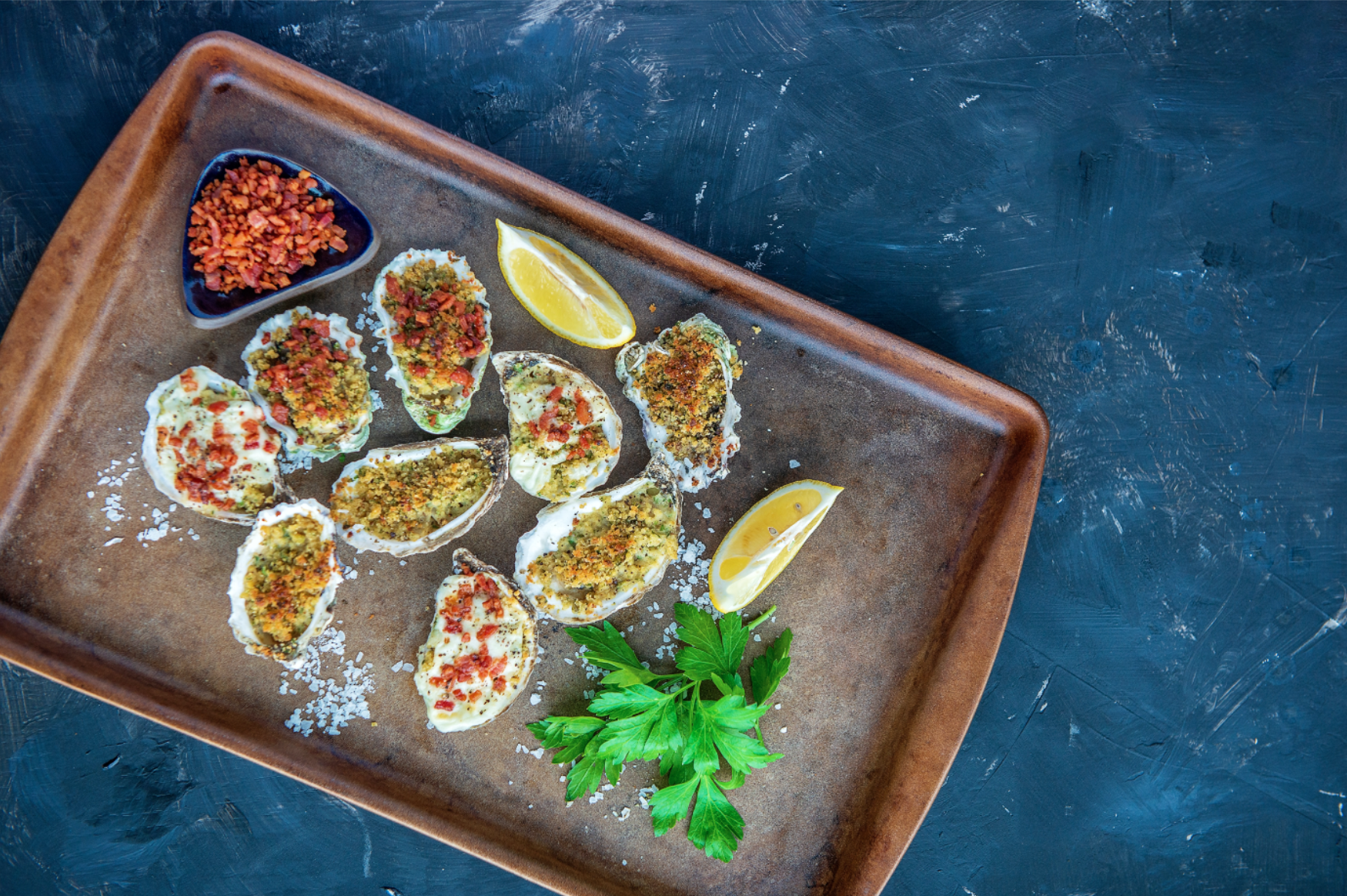
Modern Oyster Farming
But that was then. Today many oysters are farmed from sterile breeds called triploids (which don’t have the unpleasant side-effects of spawning) and most are raised in pristine waters that are cold year-round. And we have better practices in everything from monitoring water quality to handling the harvest. In other words, when it comes to oysters, the most important ‘R’ these days is ‘refrigeration.’
All that said, when it comes to taste, fall and winter are still the best time of year for oysters, which is good news for all your festive occasions in the months to come.
“You can get good oysters all year round, but the colder the season, the firmer and fatter the oysters,” says McMurray, better known as “Shucker Paddy”, the Toronto-based World Oyster Shucking Champion and three-time Guinness World Records holder, who was in Comox this summer for the B.C. Seafood Festival. The bigger issue might be warmer water in general—he’s noticed an increase in oyster lease closures due to rising ocean temperatures, though none in British Columbia so far.
Some experts suggest following the “frost line” and only eating oysters from northern locales in winter and southern in summer, when they are at their fattest and best-fed. Others point out that what matters is how they are farmed—ideally, in baskets or trays in deep, nutrient-rich water.
“The old school rule that you couldn’t eat them in months with ‘R’ is a little true for beach oysters,” says Bruce Schmaltz, the owner of the Ucluelet-based RavenLady Oyster Forte food truck, who uses plump Effingham Inlet oysters in his worth-the-drive po’boy sandwiches. “These are grown in trays and when the weather gets warm, they lower them to the cooler water. There’s science and there’s art, and any time you’re dealing with a living organism it’s an art.”
Lowering the oysters into chillier water doesn’t just keep them away from harmful bacteria; it has another effect. “The Kusshi oyster, for instance, does have a moment where the spawn cycle may affect supply, but the Stellar Bay growers drop them into deeper, colder water, staving off the reproduction cycle as long as possible, and it works on this fantastic oyster,” says McMurray.
Cold water, then, is key to good oysters and Vancouver Island is surrounded by it, which is why so many of B.C.’s 30 varieties of oysters are grown here, mostly in Baynes Sound on the east coast and Clayoquot Sound on the west. They range from the tiny tray-grown Kusshi, with its delicate melonlike flavour, to the large, meaty, barnacle-encrusted Mac’s Beach oyster. McMurray, who has shucked a few bivalves in his time, describes the Island oysters as “outstandingly beautiful.”
He adds: “The taste and texture—creamy or not, the B.C. oyster is unlike anything else you can find anywhere. It’s the merroir. The region that it comes from is what you should be sourcing, not seasonal differences.”
So as you start to plan your festive events for the months ahead, forget the myths and consider the oyster, especially if it comes from the chill, clean waters of Vancouver Island.
Eating Oysters
Buy it.
Always purchase your oysters from reputable sources—this is one foodstuff where a “bargain” could turn out to be a very bad deal. Note that oysters should be eaten within a week of harvest in summer and 10 days in winter, so freshness is paramount.
Store it.
Pack oysters with ice while they’re in transit, and once you get home, place them in the refrigerator in a water-filled bowl or covered with a damp cloth so they don’t dry out.
Shuck it.
Put on a pair of cut-proof gloves, then hold the oyster, cup-side down, with one hand. With the other, slip an oyster knife into the hinge, twist, and the top should pop off. Discard the oyster if there is any mud in the shell. “You don’t need force to open an oyster. You need finesse,” advises “Shucker Paddy”.
Serve it.
Place the shucked oysters on a plate lined with a bed of coarse salt, seaweed or crushed ice so they stay cool and don’t tip over.
Pair it.
Despite tradition, wine isn’t necessarily the best partner for oysters. Nope, not even Champagne. Instead, try them with beer, icy-cold vodka or a smoky, salty single malt whisky like Bowmore. Trust us on this.
Eat it.
Experts will tell you the best sauce for an oyster is the brine it comes with. But if you must, add a drop of lemon juice, Tabasco or mignonette sauce, then tip the oyster into your mouth. Chew it once or twice to release its subtle flavours—you might detect mint, cucumber, melon, earthiness, metallic and/or mineral notes—then swallow.
Repeat as needed!


